One of the things that a gentleman eventually notices and appreciates when wearing tailored clothes is just how many pockets a suit or sport coat has.
Pockets, whether on a jacket or other article of clothing, are a key but often overlooked practical feature in clothing. In this article, we will explore the range of pockets that appear in classic menswear no matter if they are more common ones such as jetted pockets, flap or patch pockets, but also more obscure ones. Ever heard of coin pockets, welted pockets or ticket pockets? Or even better, the frogmouth pocket? Once you are done with this complete guide you know all of them!
A Brief History of the Pocket
From prehistory all the way up until the 17th century, what we consider to be a pocket–pouches sewn into clothing–did not exist. Instead, some sort of external purse or tie-on pouch, usually in the form of a belt, was the norm to carry money and other small items. In fact, the celebrated Bronze Age “iceman,” Ötzi, was discovered with just such a belt pouch.
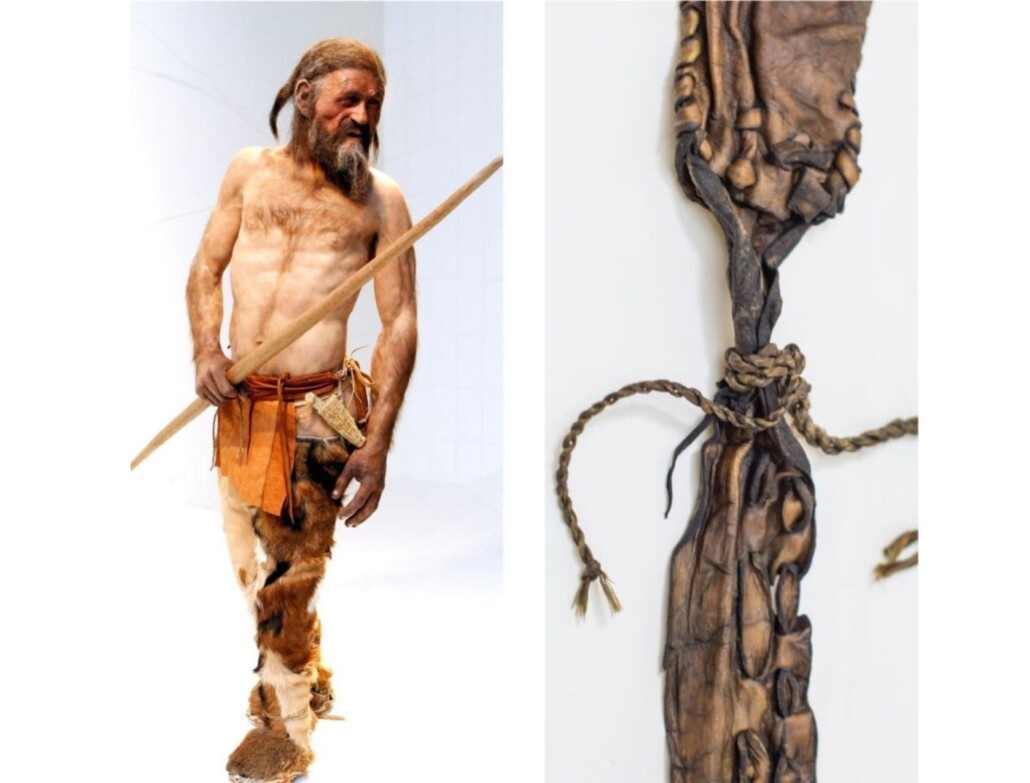
A disadvantage of this was that when you were carrying valuables, their visible presence furnished a temptation to thieves and literal “cut-purses.” So, the solution was to hide the items below layers of clothing, first in the form of pouches accessed via slits in one’s outer garments and then, at least in menswear, through the creation of the contemporary covered pocket sewn into the lining. Interestingly, women’s clothes rarely if ever contained pockets, and even to this day, women’s dresses tend not to have them, so women often find themselves needing a purse to carry necessities. The discrepancy between gendered clothing was so important that a part of the women’s rights and suffrage movements was a push for women’s garments to contain pockets for their practicality. However, the differences mostly still remain.
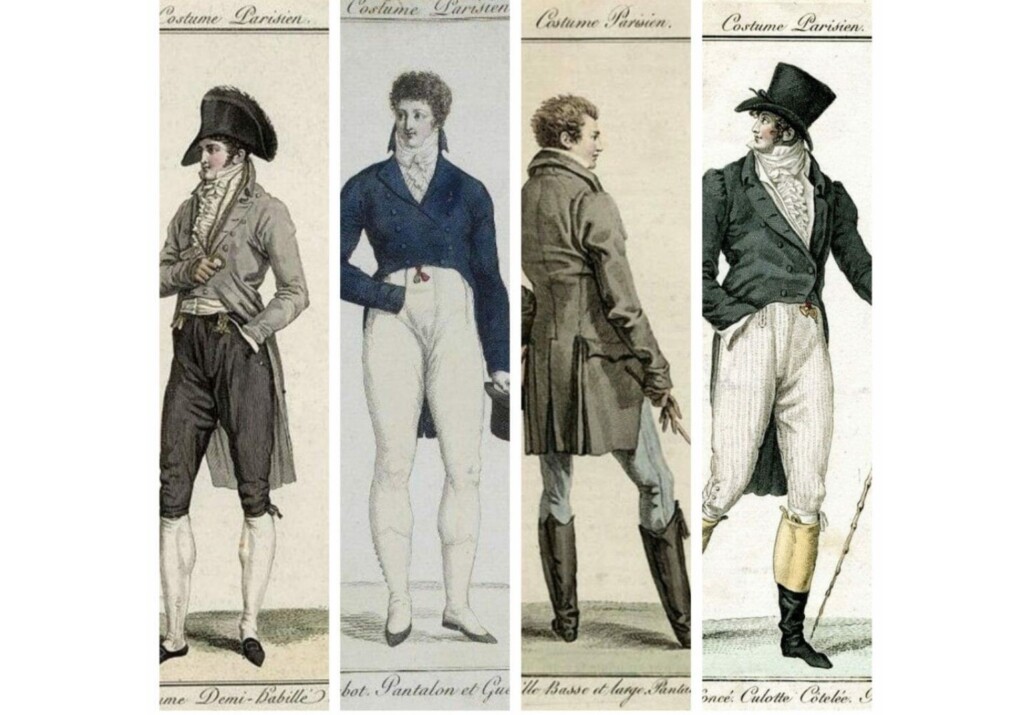
Jacket Pockets
Though pants pockets are more widely used, when it comes to actually talking about pockets in menswear, suit jackets and sports coats get most of the attention, probably because of their interesting variety. In a nutshell, there are three main forms of external pockets on jackets in order of increasing formality: patch, flap, and jetted.
1. Patch Pockets
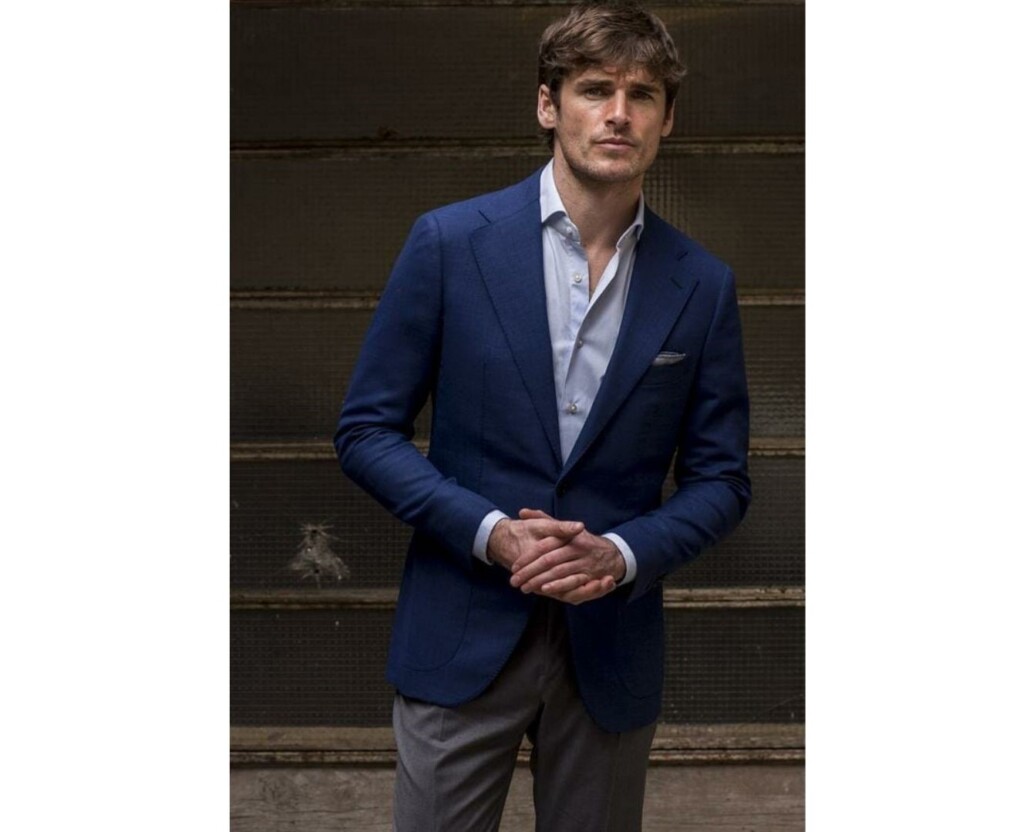
The patch pocket is in a sense the most “primitive” as its construction is also the most basic: a patch made of the same material as the jacket itself is simply stitched onto the surface. It is the least hidden of the pocket types, as it, as well as the contents it contains, rests above the garment surface; in this way, it has something in common with early external pouches. The patch pocket is seen as casual because its construction is highly visible, so it appears primarily on sport coats. If it appears on a suit, the suit is immediately rendered casual rather than appropriate for business wear; on the other hand, you could also likely split the suit and wear the top as an odd jacket.
Because they are spacious and wide opening at the top, patch pockets invite you to stick your hands in them for casual loafing. They also invite you to toss things into them; however, if patch pockets are laden with heavy items, even keys or a large mobile phone, they can sag, creating a sloppy appearance and permanently warping their appearance, even when they are empty. Pressing the pocket with an iron can help with this, but the best approach is prevention: use these pockets only for light items. Despite having some shortcomings, I personally prefer patch pockets on my sport coats for their relaxed appearance and what I consider a cleaner look than flap pockets.
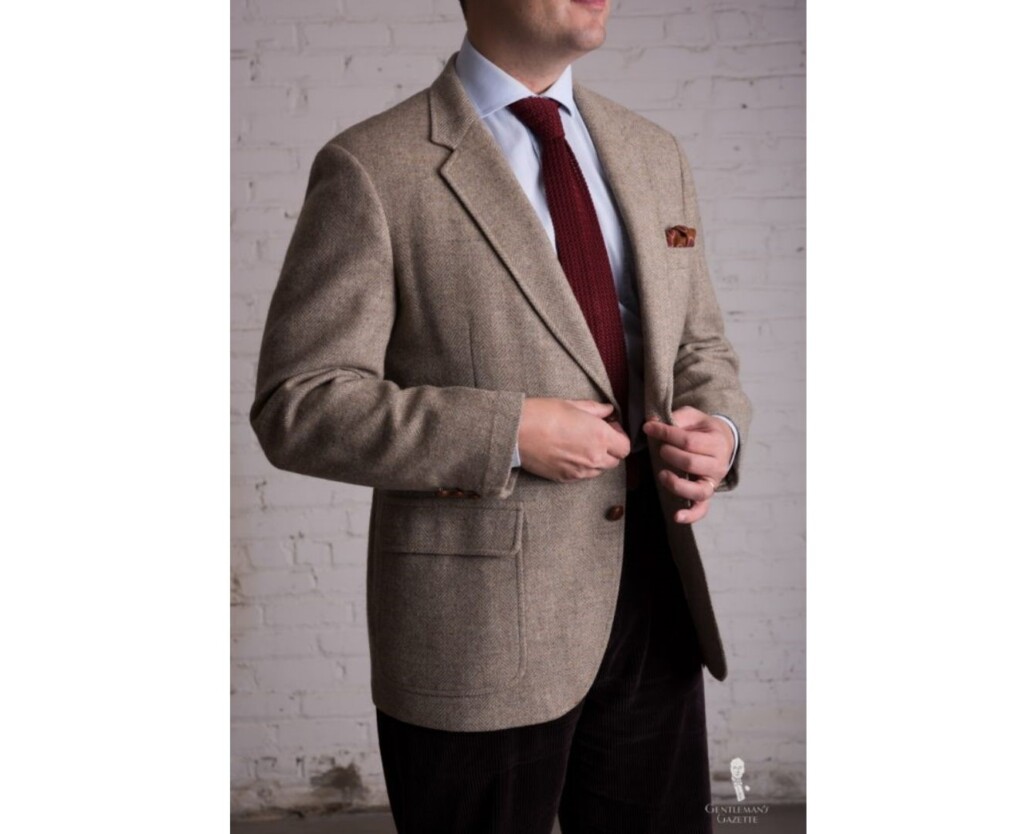
Finally, on occasion, you will come across a blended pocket, such as this patch pocket with a flap, which steps up the formality of the pocket slightly above a plain patch pocket.
2. Flap Pockets
Next in formality is the flap pocket. This differs from the patch pocket because the pouch exists beneath the surface of the jacket and is covered with a flap made from the same material as the jacket itself. This was originally supposed to keep debris from getting into jacket pockets when worn in the country. Flap pockets occupy a sort of middle ground in terms of formality: they are the main choice for business suits, but they can also appear on sport coats as a testament to their casual origins.
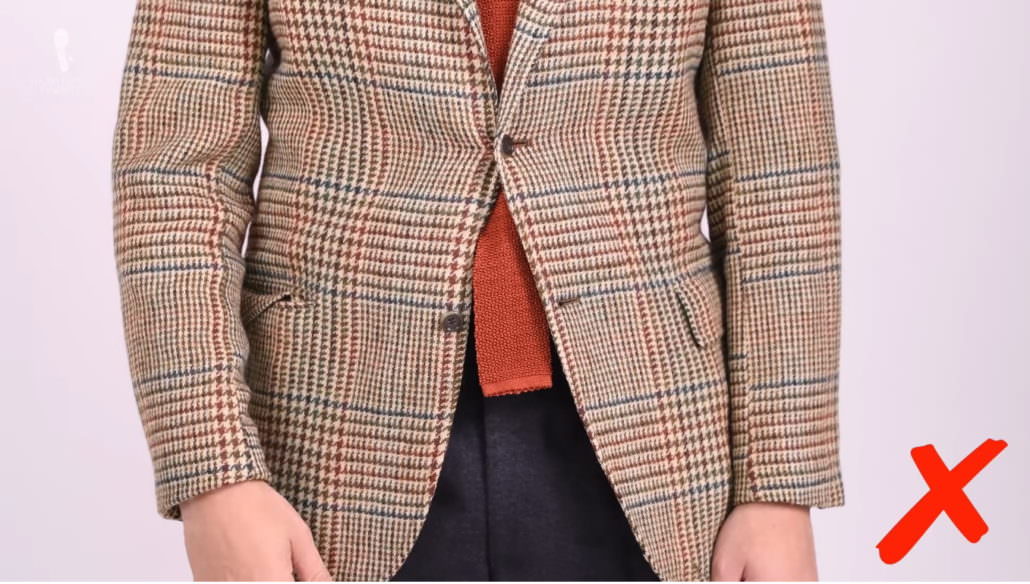
Because it is soft, the flap often ends up tucked inside the pocket, which can look sloppy if you have one tucked in and one not.
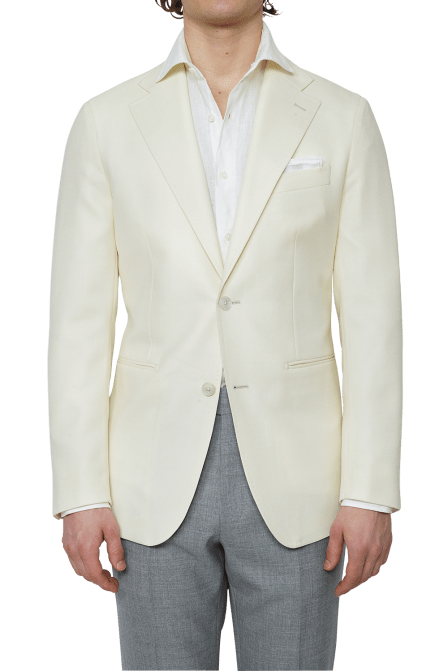
3. Jetted Pockets
Sometimes, men will comment that they prefer to leave the flaps on their pockets tucked in, and, actually, flap pockets were originally intended to be worn this way; the flaps were only taken out if they were necessary to keep rain or debris from getting in. Essentially, a tucked in flap creates impromptu jetted pockets for a cleaner, more polished silhouette. These are the most formal pocket style, appearing on evening wear and formal morning dress alike, though they can also appear on suits and even on sport coats. Their appropriateness for formal clothing, however, lies in their streamlined appearance, since all you see of the pocket is a slit. Jetted pockets are also referred to as besom pockets or welted pockets; the term “welted” refers to the reinforced edges (welts) of the slit, which are partially decorative and partially practical support.
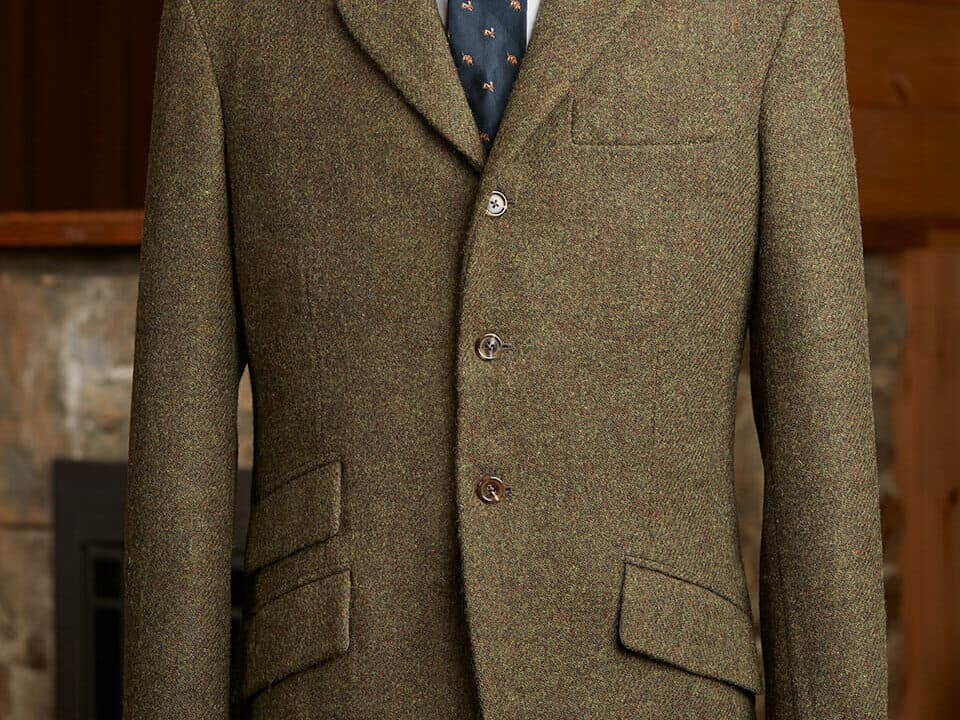
4. The Ticket Pocket
Usually, the discussion of jacket pockets–and of menswear pockets in general–ends here. However, this omits a great number of others that are present on jackets. The ticket pocket, for example, is a third pocket that appears on the lower quarters of a jacket, above the main right pocket. This is because the wearer is assumed by default to be right-handed and would reach into it with his dominant hand. Lefties have to go bespoke or made to measure for the same convenience. The ticket pocket is most commonly flapped and slightly smaller than the pocket below it, though jetted versions exist. The name hints at its original purpose as a feature for train travel: a gentleman traveling to the country would carry his ticket in it, which is also why it technically should be a feature on British country-style jackets, such as tweeds, rather than those intended to be worn for business. When it appears on three-button hacking jackets, the ticket pocket, and indeed, all the flap pockets, may be cut on an upward sloping diagonal; this makes it easier to access the pockets while on horseback, further reinforcing their country associations.
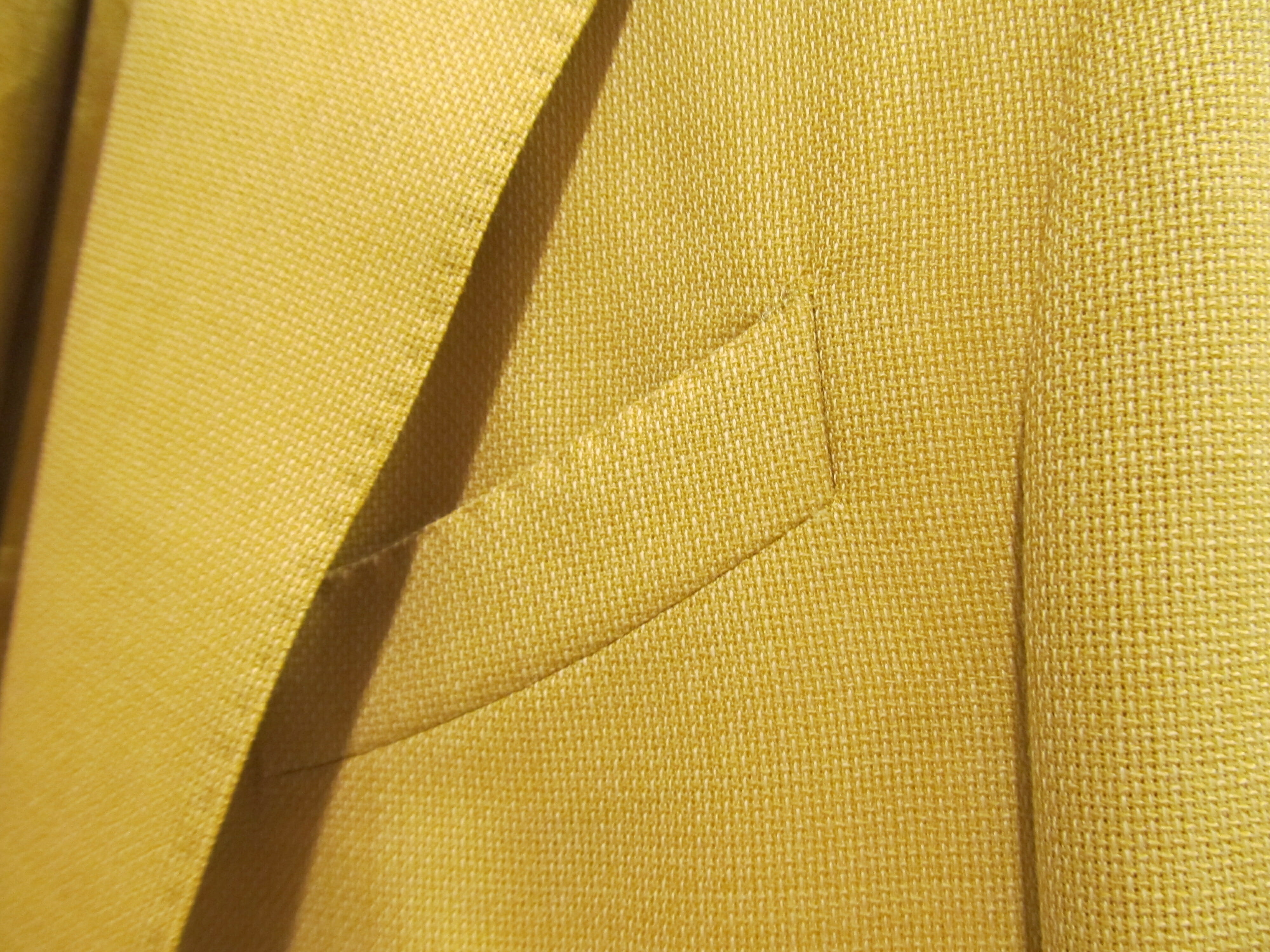
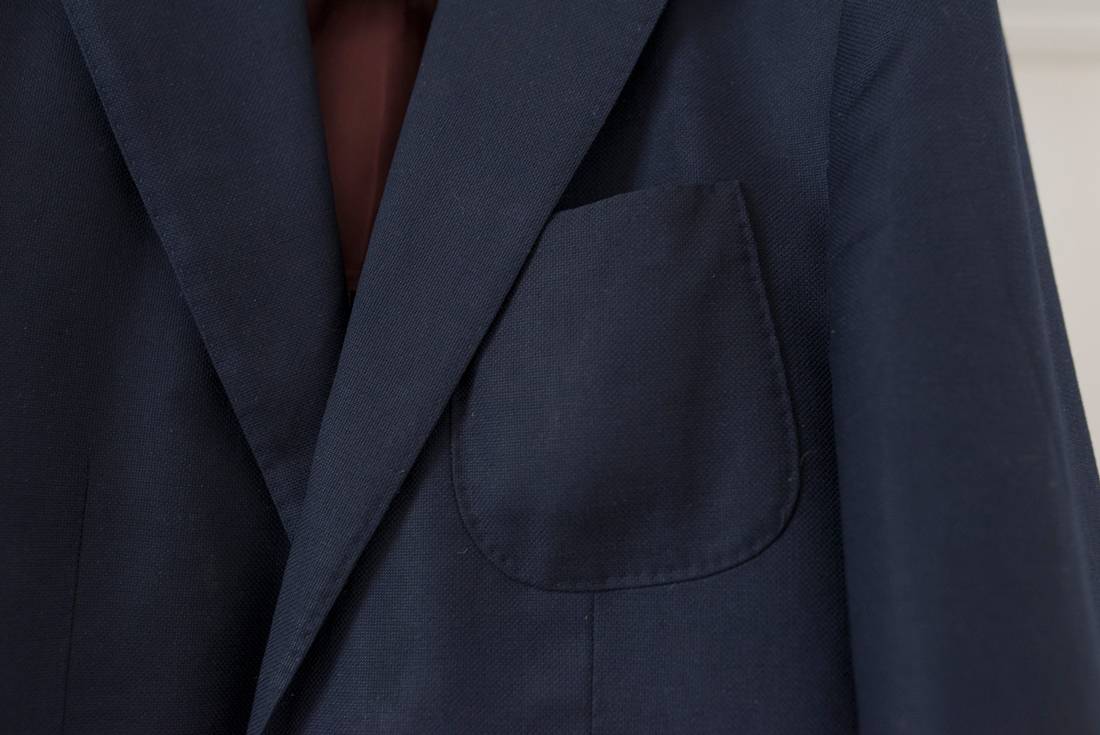
5. The Breast Pocket
The common chest or breast pocket is welted, having a visible edge. A variant that displays a dash of rakish sprezzatura is the barchetta (little boat) pocket of classic Neapolitan tailoring, with welting that is curved like the shape of a boat. In the days before tissues, handkerchiefs had a very real use, and putting them in the breast pocket kept them separate from the potentially dirty objects one carried in the main pockets of a jacket. Today, the hankie or pocket square is largely ornamental, and what better place to display one than the upper chest, where it also can visibly coordinate with a tie? Choose a pocket square that isn’t too bulky, as large ones will make your pocket bulge and thereby break the clean line of your left lapel.
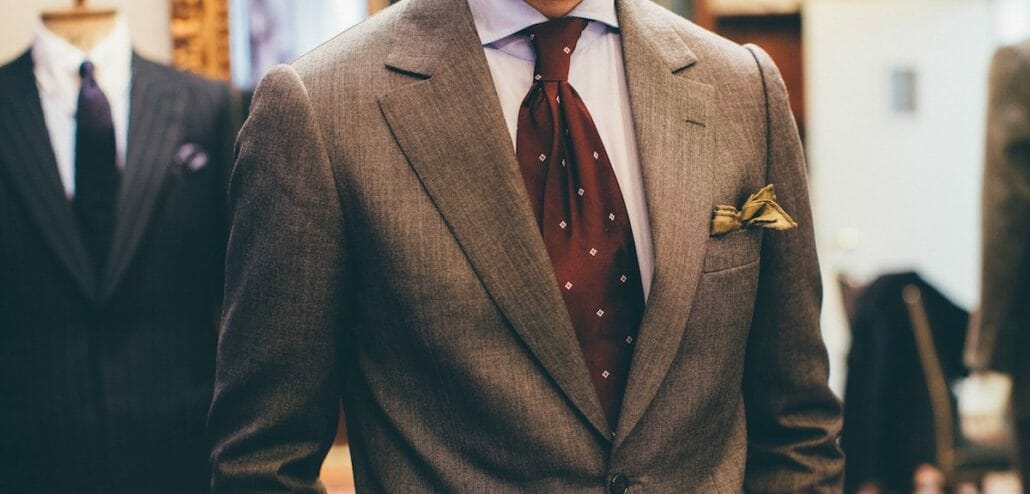
Interestingly, women’s jackets often omit the breast pocket though they are omnipresent in menswear.
In the realm of less casual tailored jackets, you may find a patch breast pocket instead of the usual welted version. This will always appear in conjunction with other patch pockets on the jacket, never with flap or jetted ones. In field jackets or safari jackets, which are even more casual, you are likely to find a hybrid pocket–a patch pocket with flaps. These feature larger, thicker flaps than what you see on tailored jackets or a flap that buttons or snaps down, making them more functional than the fairly ornamental ones on suits. In these sorts of jackets, which are really the upper-body equivalent of cargo pants, the more pockets the better, so you’ll generally have a pair of chest pockets instead of only one. However, it is worth remembering the principle that with classic menswear simple and minimalist usually means greater formality, so an emphasis on pockets is a clear sign of casual dress.
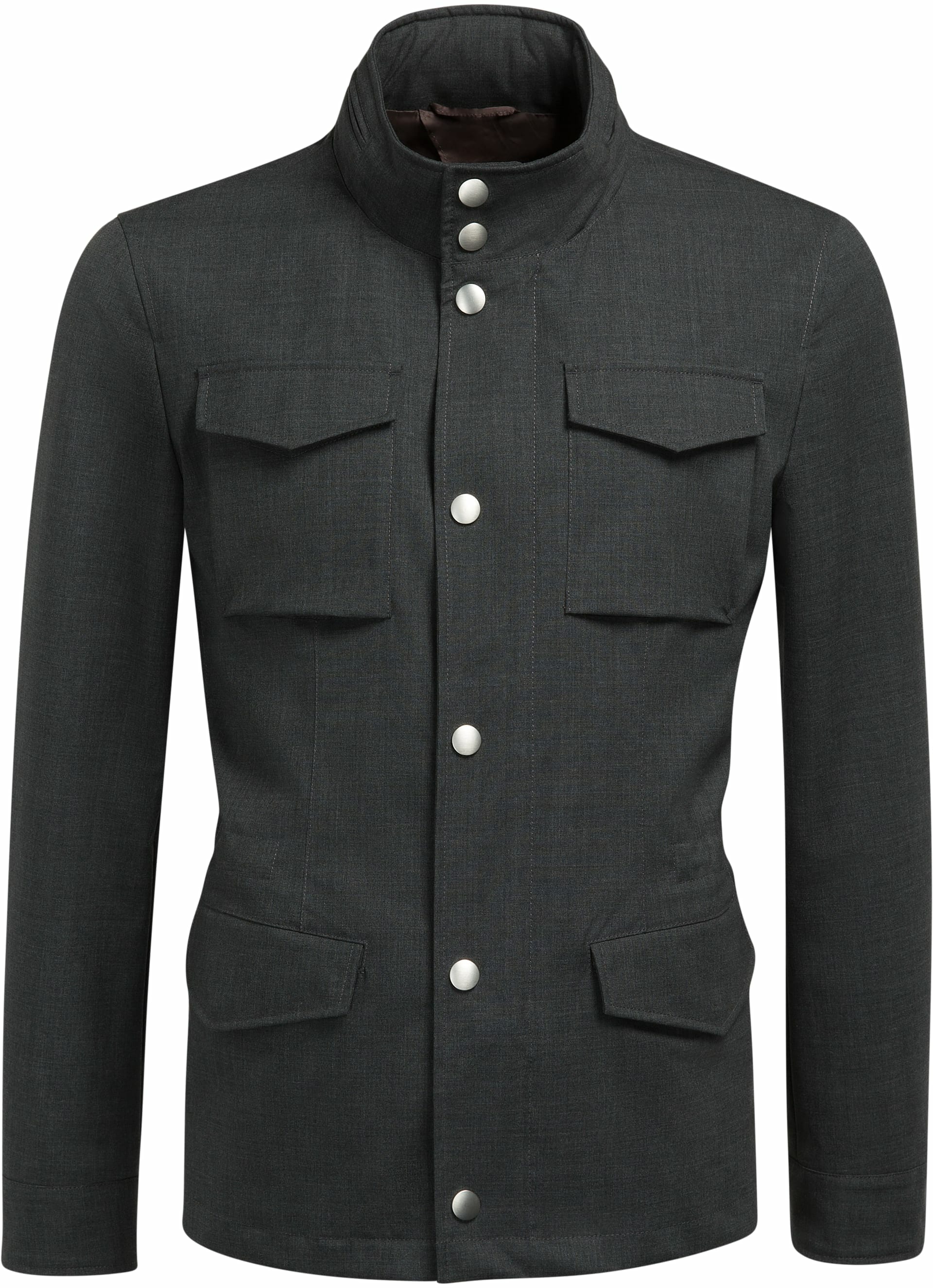
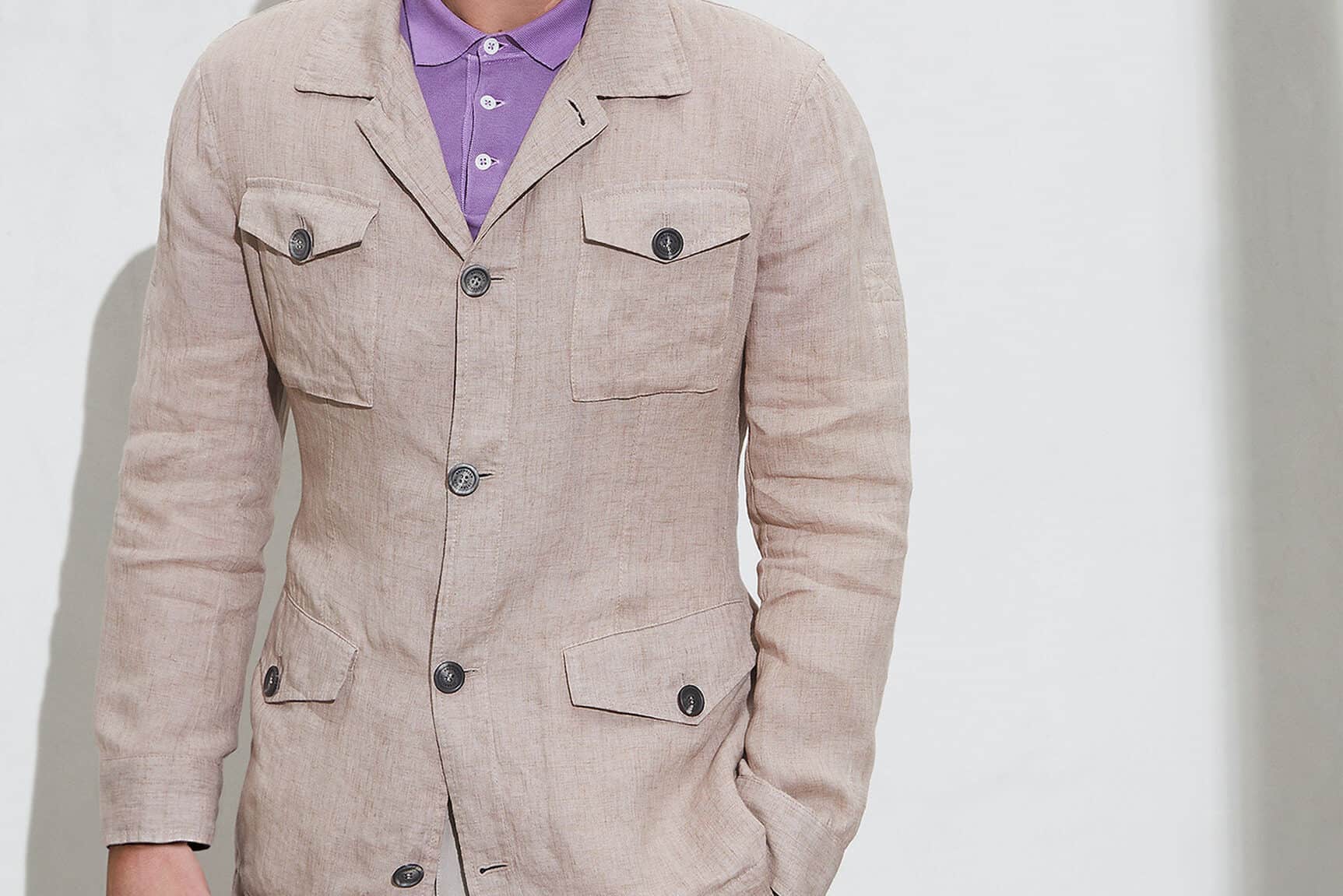
6. Inside Pockets
Probably the most useful pockets on a tailored jacket are the inner ones though they aren’t often talked about. They may not be a sexy topic, but it’s worth “looking under the hood” at the inside pockets as part of your off-the-rack purchasing decision. Most sport coats and suit jackets will only have two, one on each side. This is enough to carry a coat or breast wallet on one side (the left side if you’re right-handed) and your phone on the other. You don’t necessarily want to add many more things on the right side due to the bulk; this is especially important since the wallet goes on the same side where there is already a pocket square. Popular options for additional ”everyday carry” in the other pocket are a cell phone, a small notebook and pen for notes, lists and ruminations, or even a flask of booze. If you’re lucky enough to have additional pockets, you can use them for other things, like your vehicle key fob, mints, a cigar, or the aforementioned notepad.
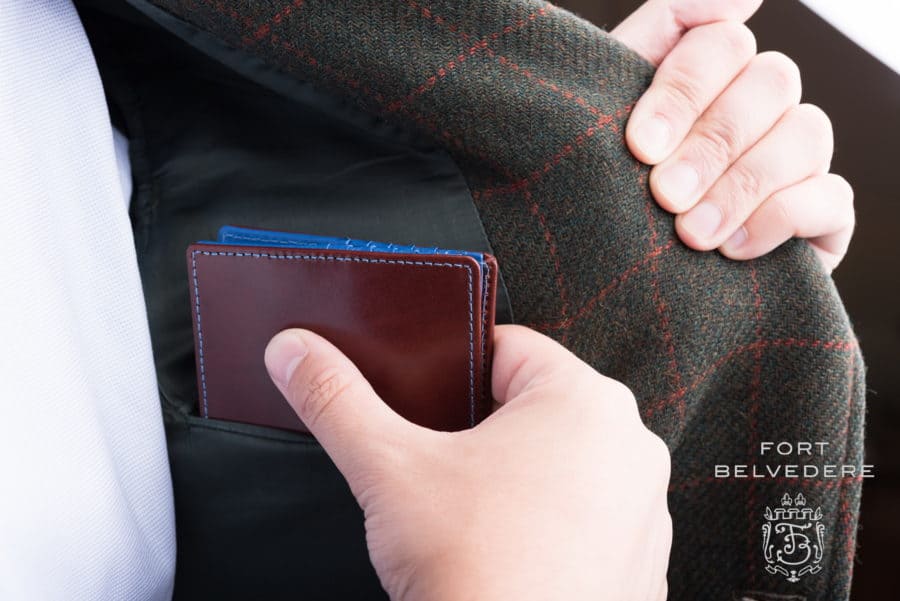
Something to remember about jacket pockets, however, is that no matter how many of them you have, if you want to maintain a sleek silhouette, so you don’t really want to load up the pockets. A large set of house/office keys and a fistful of loose coins go better in an overcoat, portfolio or briefcase so as not to create unsightly lumps that deform the appearance of the jacket. Keep to smallish, light items, for which you’ll find the inner (and outer) pockets of a jacket incredibly useful.
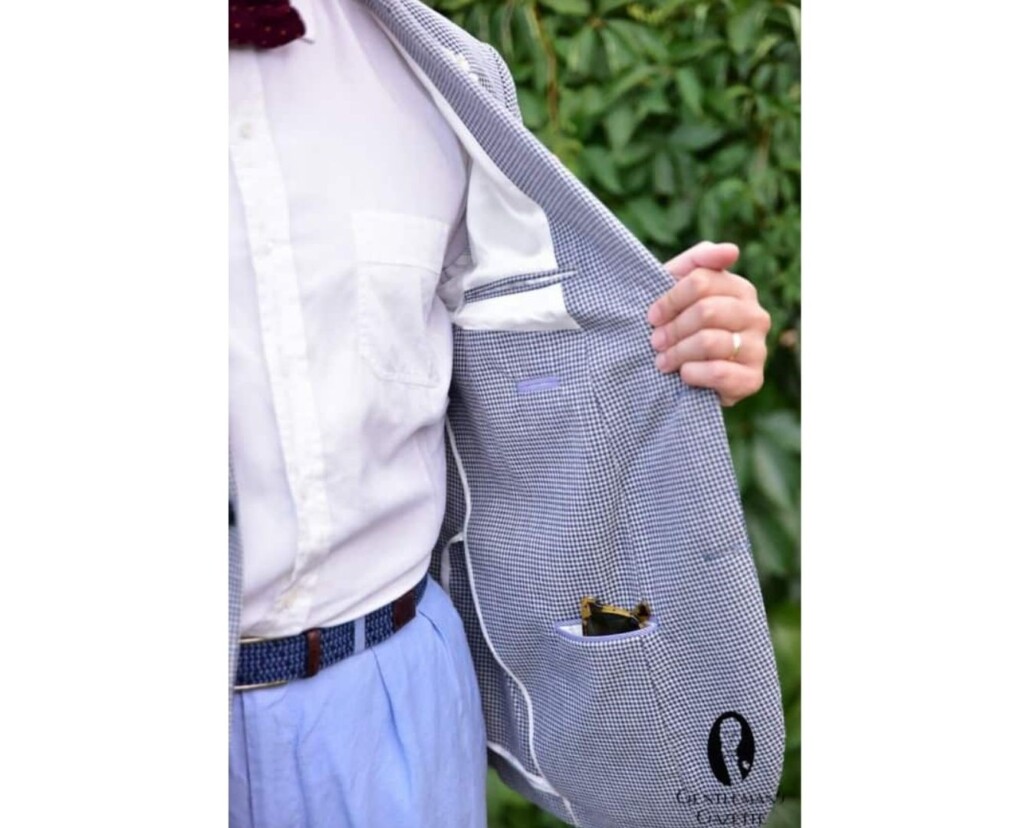
Pants Pockets
Most people have a basic sense that their trousers have two pockets, one on each side. However, those who have had custom trousers made will be more aware of the surprisingly large range of pocket options available on a pair of pants.
1. Slant Pockets
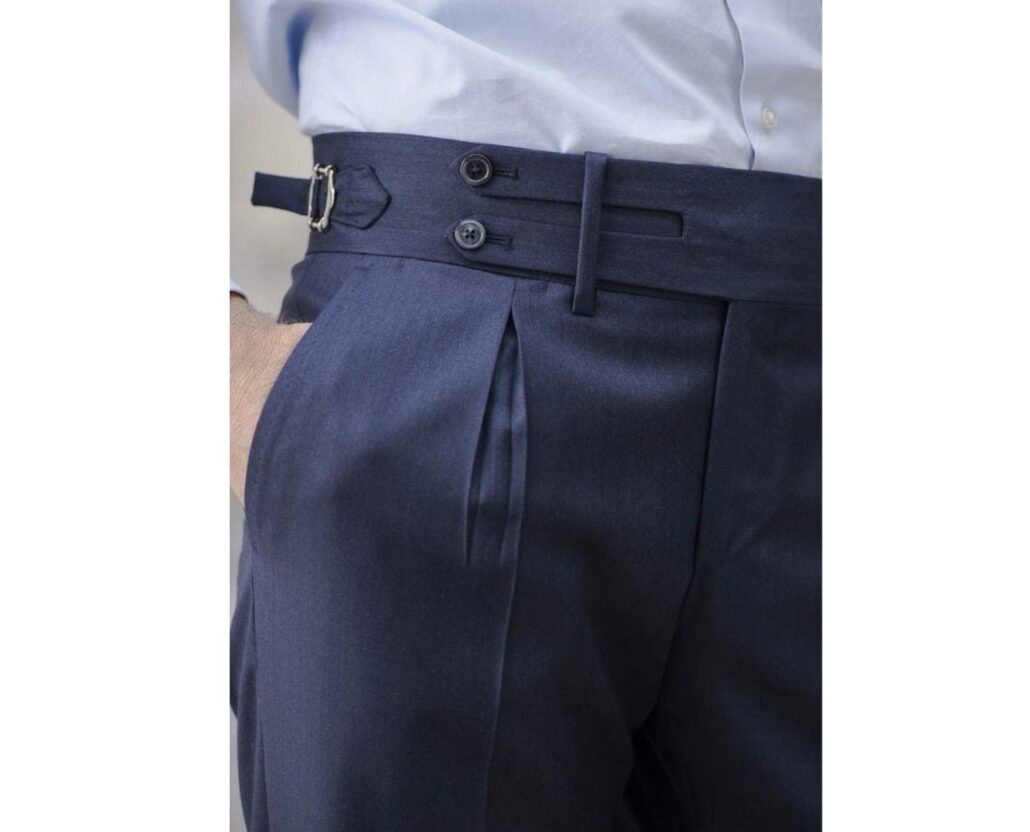
By far, the most common side pockets on trousers are slant pockets. As the name implies, these are cut on an angle, enabling the wearer to slide his hands into them easily.
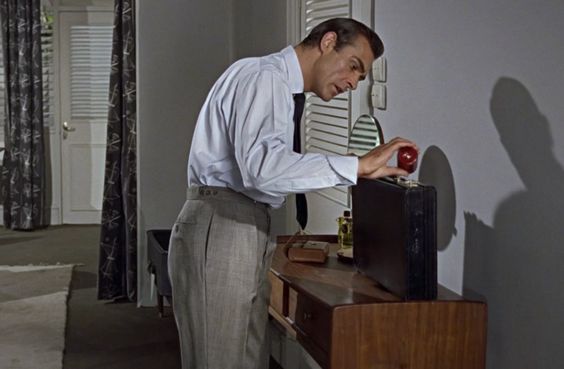
2. Vertical Pockets
However, as is often the case for aficionados of men’s style, something beyond the ordinary is more desirable. This can be achieved through choosing pants with vertical pockets that run straight up the side seams. These can make the front rise of your trousers look clean because there is no pocket line intersecting it. Alternatively, if you are wearing pleated pants, a vertical slit will run perpendicular to the pleats. Such pockets are frankly not easy to find, but they are an option on custom trousers from some brands.
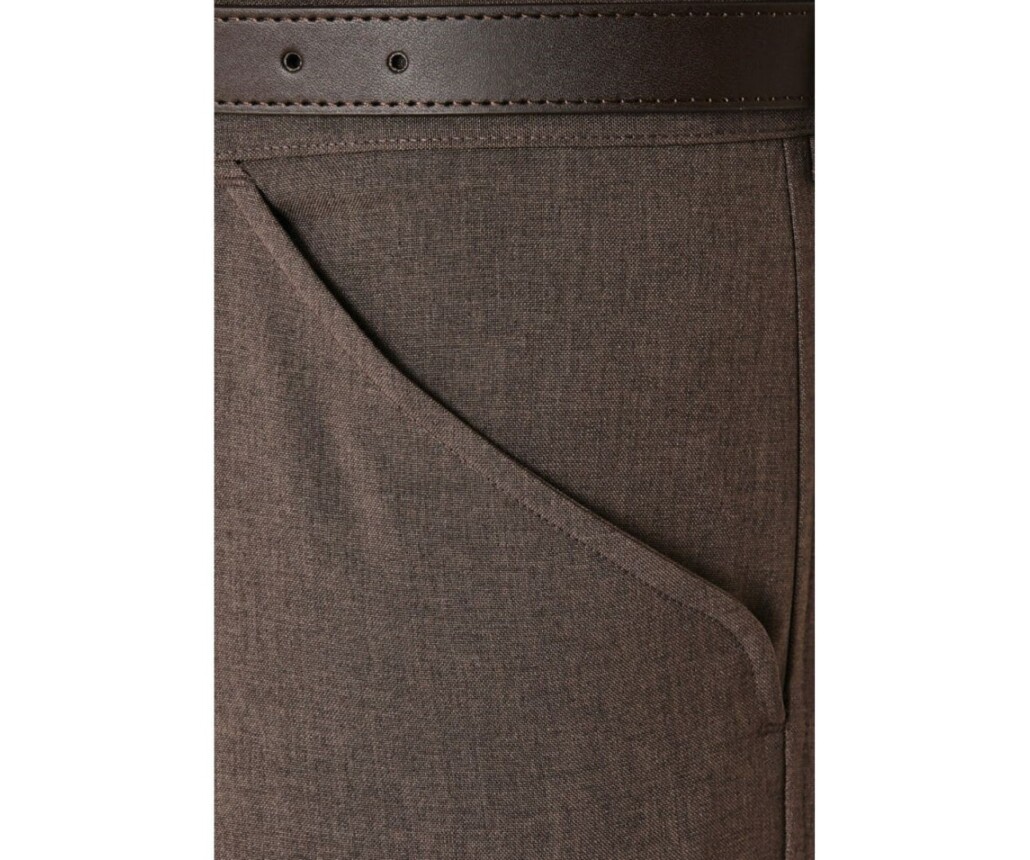
3. Frogmouth Pockets
Another possibility is the frog-mouth pocket, named for its supposed resemblance to the mouth of a frog. In the sense that these are oriented horizontally across the front of the trouser, they are the opposite of the vertical slit pocket. As such, they also really make the pockets a visible feature of the pants. To me, they have an equestrian vibe, and they enable you to pose with your fingers tucked into them while keeping your thumbs out. Frogmouth pockets go with flat-front trousers as they would interfere with pleats.
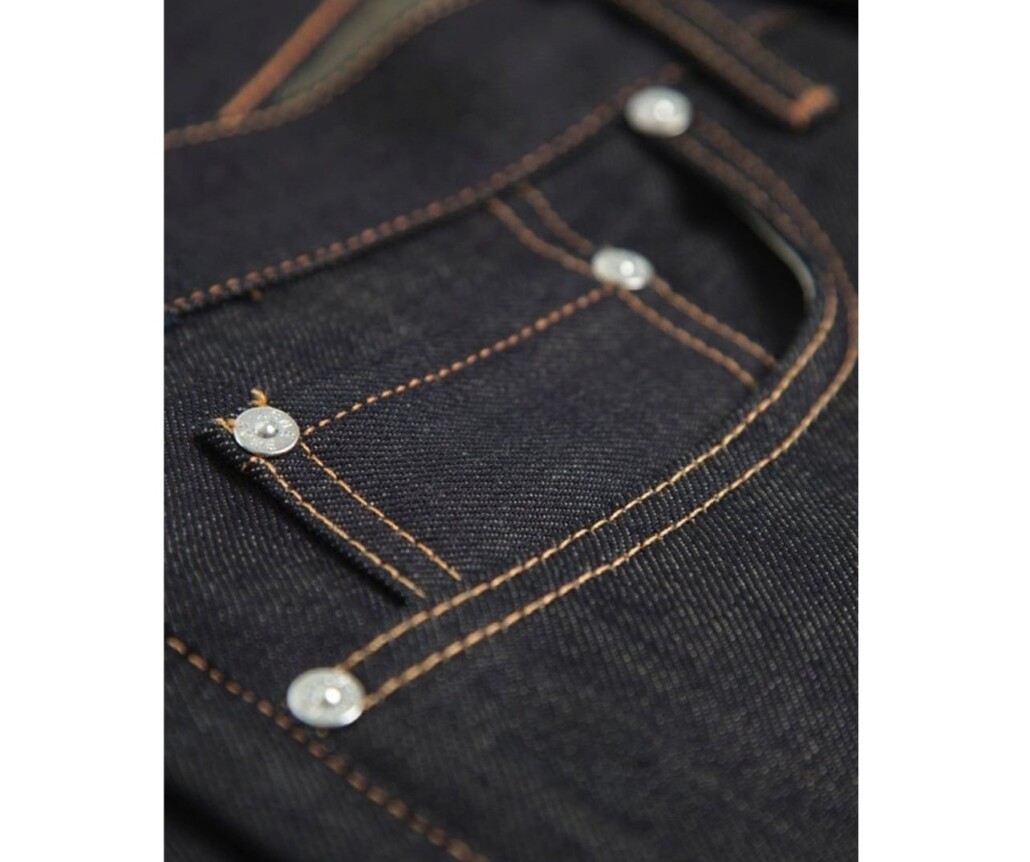
4. The Coin Pocket
If you’ve owned a pair of jeans, you are likely familiar with the coin pocket, a small, seemingly useless pocket that nests inside the larger one on the right front. Originally, it was developed by Levi-Strauss to enable men to carry their pocket watches while wearing denim. Today, in the era of wristwatches, this pocket has become vestigial, something more for a traditional aesthetic than any real function, though some men store things like coins, mints, or a condom in it. Along with the two front and two back pockets, the coin pocket is responsible for the term “five-pocket pants.”However, coin pockets can appear in pants that are more formal than jeans too, such as summer chinos, usually in conjunction with regular slant pockets.
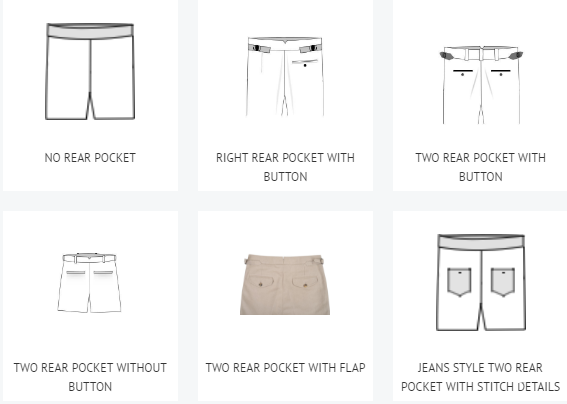
5. Back Pockets
Surprisingly enough, the variety of rear pocket options on pants exceeds even the possibilities of the front. You may have no pockets at all, one pocket or two, buttons or no buttons, flaps or simple welts–quite a bit of choice for something with minimal usefulness. Sure, you can put something in those rear pockets, but nothing much if you plan to do any comfortable sitting. As with most clothing design features, simpler means more formal, so dress pants would normally just have plain jetted rear pockets, perhaps with buttons. Once flaps enter the picture, the trouser becomes more casual. Rear patch pockets (again, think jeans) are especially casual.
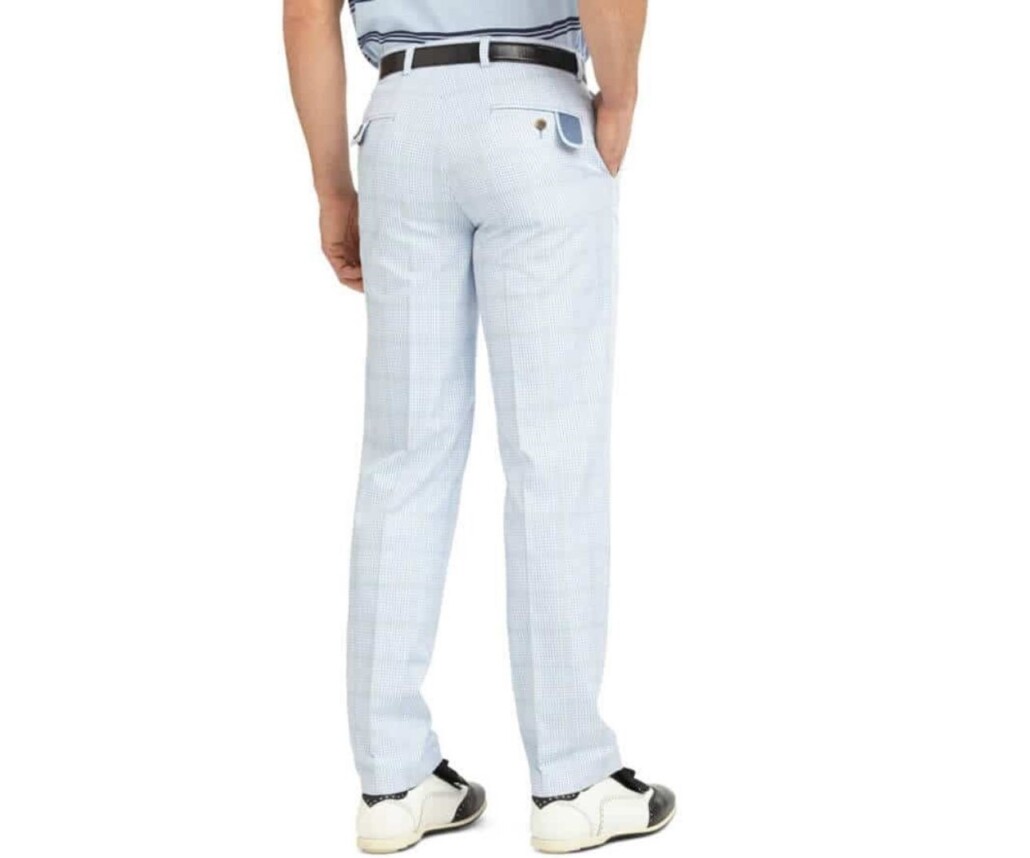
As with jacket pockets, caution is urged in putting things in your trouser pockets. Sure, it’s practical to load your pockets up, but nothing ruins the appearance of dress pants more than being able to see a large wallet or iPhone through the fabric. Take it from a guy who used to carry a massive boar-bristle brush in his front pocket as a teenager: if you have any consideration for style, stay light and limit your pocket contents to small items, like a loose cash, credit cards, or a couple of keys.
Shirt Pockets
When considering shirts with pockets, we are usually in the world of casual: single-pocket polos or two-pocket Western shirts. But in the realm of tailored style, one thing comes to mind: the Oxford cloth button-down or OCBD, which bears a single chest pocket on the left side. Unfortunately, shirts with a patch chest pocket have become associated in the popular imagination with nerds wearing pocket protectors or, at best, absent-minded and stylistically challenged science teachers. However, connoisseurs of classic style understand the true appeal of the OCBD: it’s ability to be casual yet easily wearable with tailoring at the same time. Part of its casual heritage is the presence of the pocket, so purists will avoid OCBDs that don’t have it. Generally, nothing is put in this pocket, certainly not a pen, unless you want to risk leakage or are willing to go the pocket-protector route.
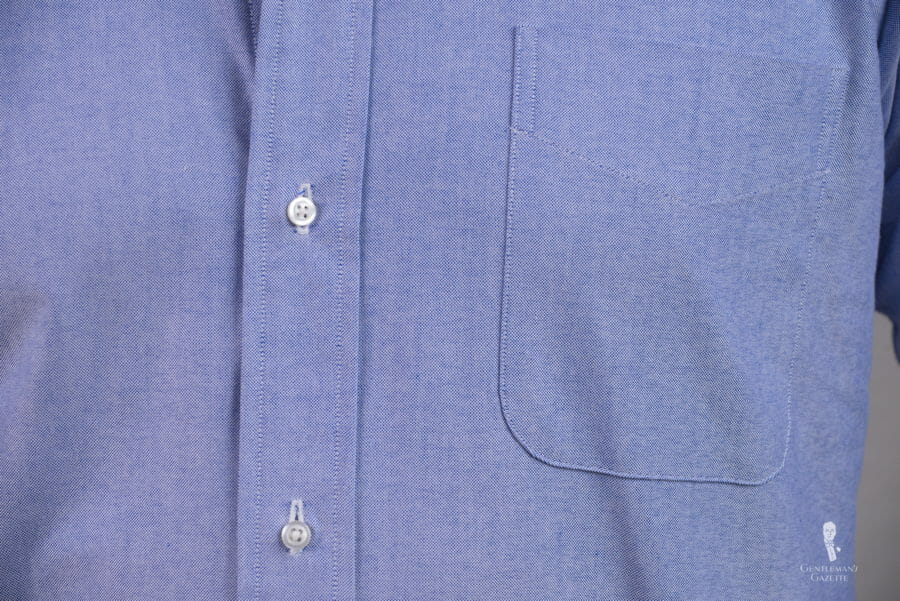
Conclusion – Know Your Pockets
Pockets are something we use every time wear clothes, yet, rarely do we think about them in terms of their appearance, variations, and history. Pockets are not only functional but can have a stylistic impact depending on how they are cut and whether they are present. In fact, they are also major earmarks revealing the formality or casualness of a particular garment. Are pockets meaningful in your style? What do you put in yours? Do you have the advice to share on pockets? Tell us in the comments section below.
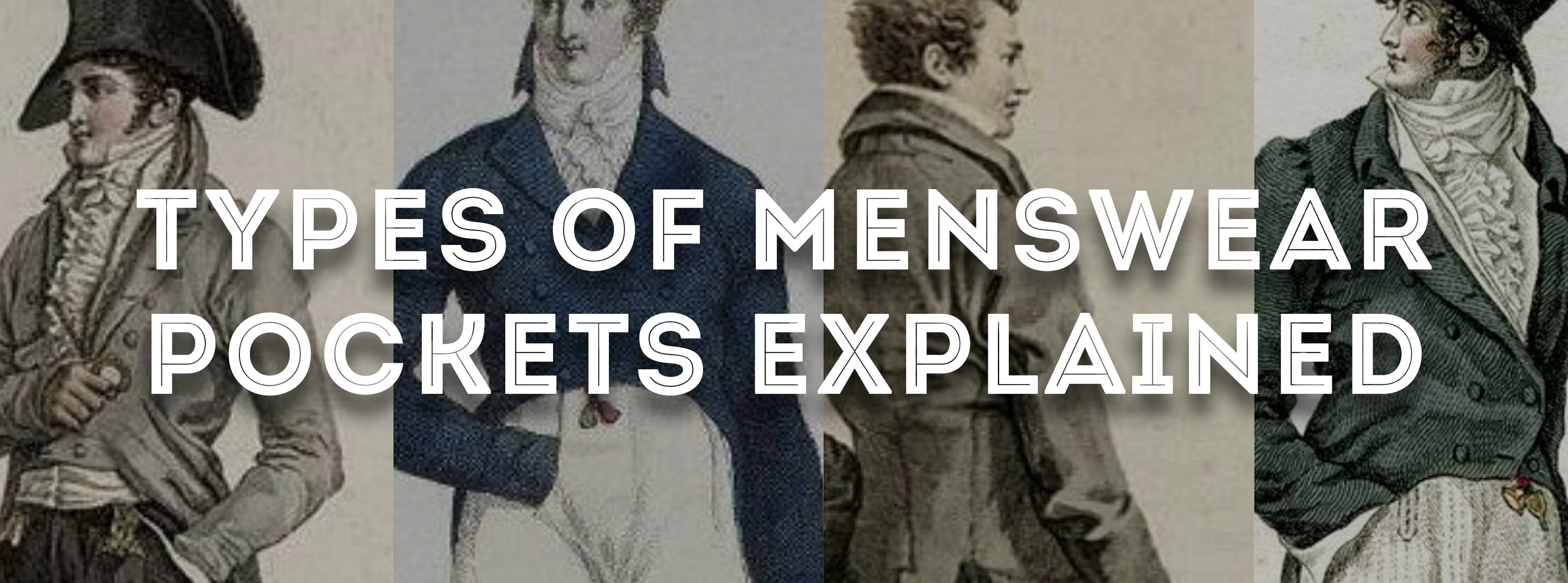
We gentlemen who still find pocket watches fashionable are glad that the 5th pocket still exists in denim jeans. I still call that a watch pocket, not a coin pocket. To me, the coin pocket is the little subdivision some front pockets have on the inside, as the watch pocket had (and still has) a very different purpose. Similar to the ticket pocket, we should not change the name just because many do not use it for that purpose.
Ticket pockets, by the way, are still infinitely useful in places like New York City. We often use a ticket for the commuter train and/or the subway, or get a ticket from a valet or parking attendant if we drive. These are absolutely useful to have, and a much better option than the plastic card holder some people glue onto their phones.
Amen Mr. Willey! I often sport my dad’s 1927 Hamilton pocket watch with my jeans. Nice look, and practical.
Great article, with two minor quibbles.
To say that the inside pocket is a great place to store a cigar is nonsense. A cancer-producing, smelly cigar has no business being in any pocket, inside or out.
You say that on-seam pockets are an option on “some custom brands.” They’re available on all custom brands; that’s what makes custom, custom.
Get off your high horse. Some people like to smoke cigars and if they want to keep one in their jacket pocket, thats their business
Where is the Napoleon pocket? One of my casual jackets has this feature and it can be quite useful.
While the ticket pocket might justify itself by its utility, it destroys the symmetry of the jacket, and the tailor that developed it is currently confined to the ninth circle of sartorial Hell,wrapped in double knit, and surrounded by used car salesmen pitching Gremlins.
Yes, yes, yes. A thousand times yes! Moulin rouge. Il pleut. Excellent! This is a colleague, Hastings, after our own heart.
I say Poirot… if the ticket pocket “destroys the symmetry of the jacket”, what about the breast pocket? Doesn’t it destroy the symmetry of the jacket as well?
Good point, or what about the lapel buttonhole on a SB jacket?
Button hole, watch, double breasted jackets, the list of asymmetrical items goes on…
The idea that symmetry is preferable seems a very simplistic aesthetic. Perhaps we could connone sider balance instead?